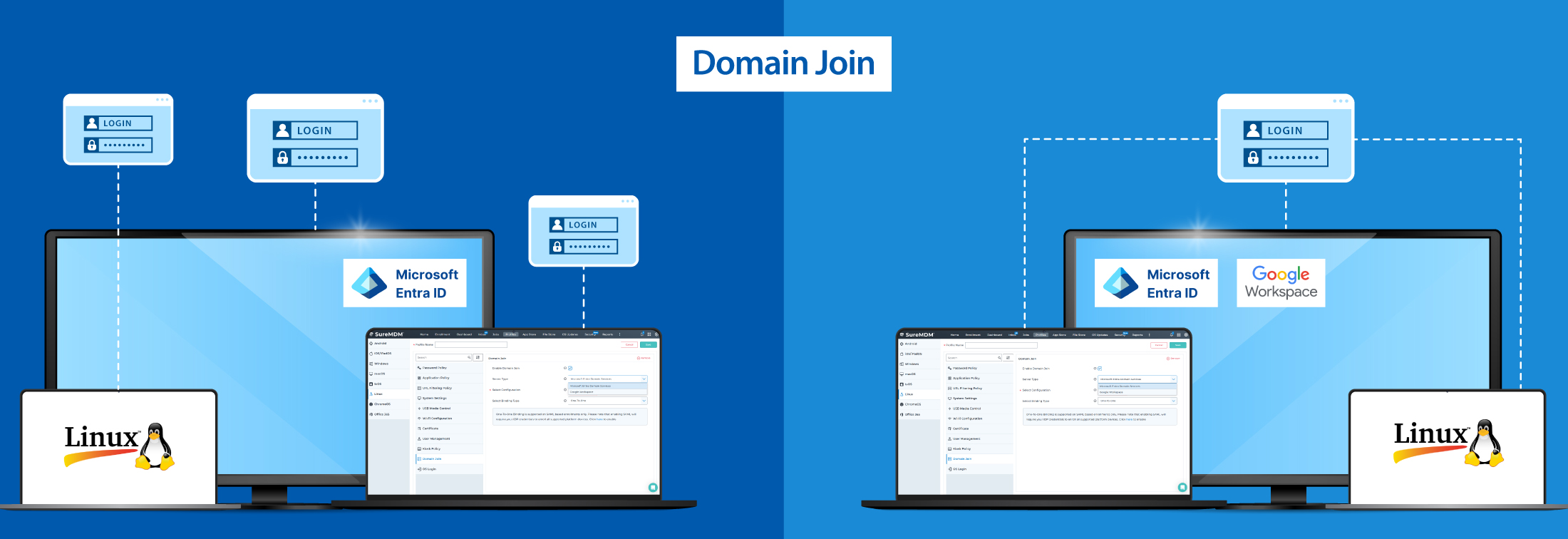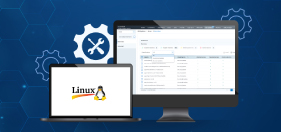Simplify LDAP Configuration for Linux Devices with Domain Join
Feb 19, 2025 | Nareddy Saivikas Reddy
Managing Linux devices in large organizations can be a complex and challenging task. One major issue is the inconsistency in login experiences across different devices, often caused by varying configurations. This inconsistency poses serious security risks, making it harder to ensure safe and efficient access for users.
Challenges with Traditional Login Configuration Methods
Traditional methods, such as manual LDAP (Lightweight Directory Access Protocol) configuration, often expose organizations to security vulnerabilities. Misconfigurations leave devices open to unauthorized access, while inconsistencies in authentication policies, password complexity, and user privileges create security gaps. This makes it difficult to provide a secure, uniform user experience across the organization.
These challenges not only increase the risk of security breaches but also consume valuable IT resources that could be better spent elsewhere. So, how can organizations simplify and secure this process?
Solution: SureMDM Domain Join for Linux
To address these challenges, SureMDM offers a “Domain Join” feature for Linux devices. Domain Join allows IT admins to manage LDAP configurations from a centralized console. This not only eliminates the inconsistencies and security risks associated with device-specific setups but also ensures a more secure, streamlined, and consistent login experience across the entire organization.
Learn how to configure SureMDM Domain Join for Linux
Key Features and Integrations
SureMDM integrates with two leading directory services—Microsoft Entra Domain Services and Google Workspace—offering Domain Join to simplify LDAP configuration and provide flexible, secure login options.
1. Microsoft Entra Domain Services
- Flexible Bindings
- One-to-One Binding: Users can log in only to devices enrolled using their specific SAML account. Perfect for organizations that require strict user-device pairing for sensitive workloads.
- Generic Binding: Supports broader access across devices enrolled in the domain.
- Use Case
- Imagine a software development team where each Linux device is tied to a specific developer’s account. With One-to-One Binding, only the authorized developer can access their assigned device, ensuring accountability and protecting intellectual property.
- Imagine a software development team where each Linux device is tied to a specific developer’s account. With One-to-One Binding, only the authorized developer can access their assigned device, ensuring accountability and protecting intellectual property.
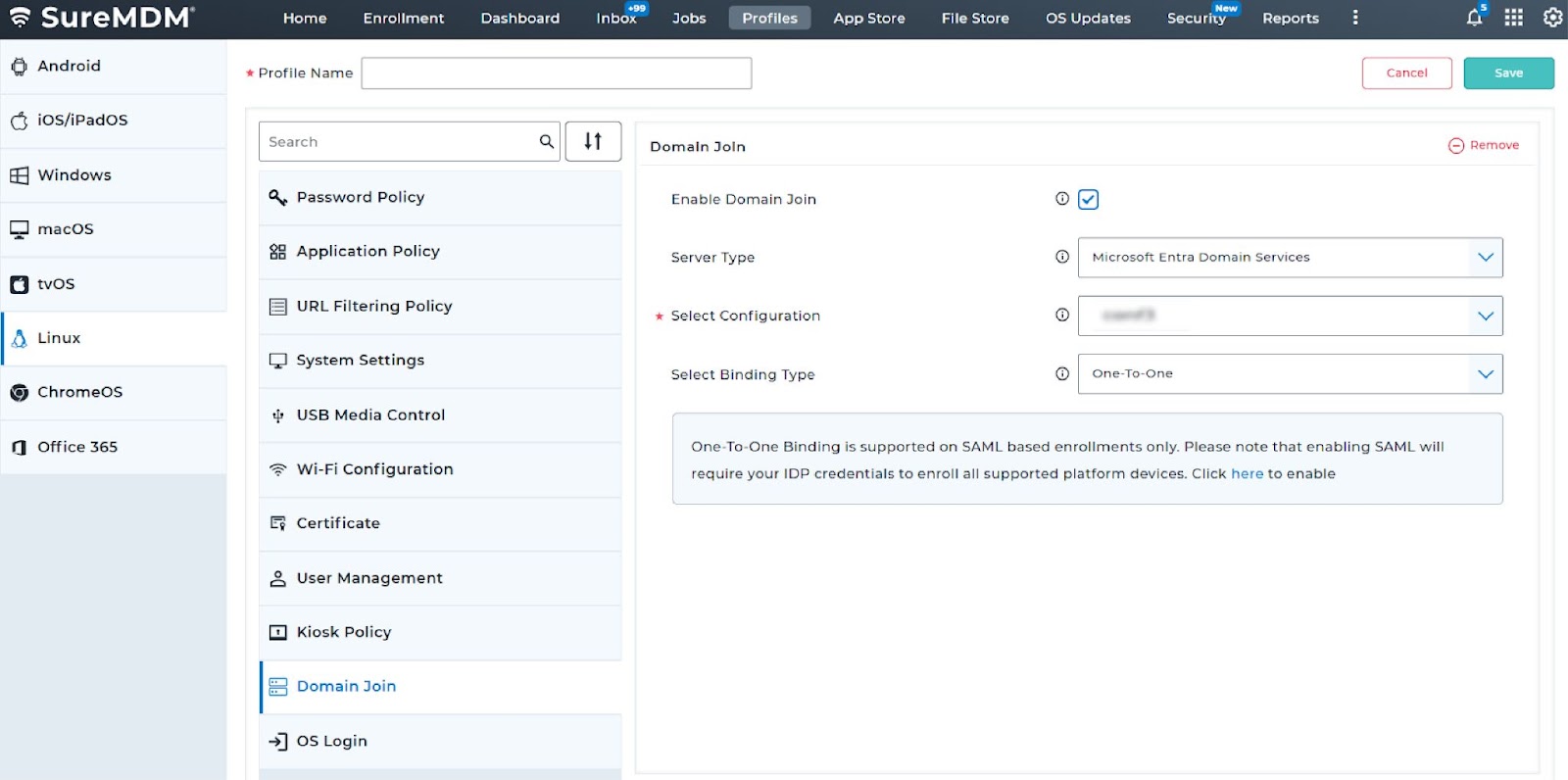
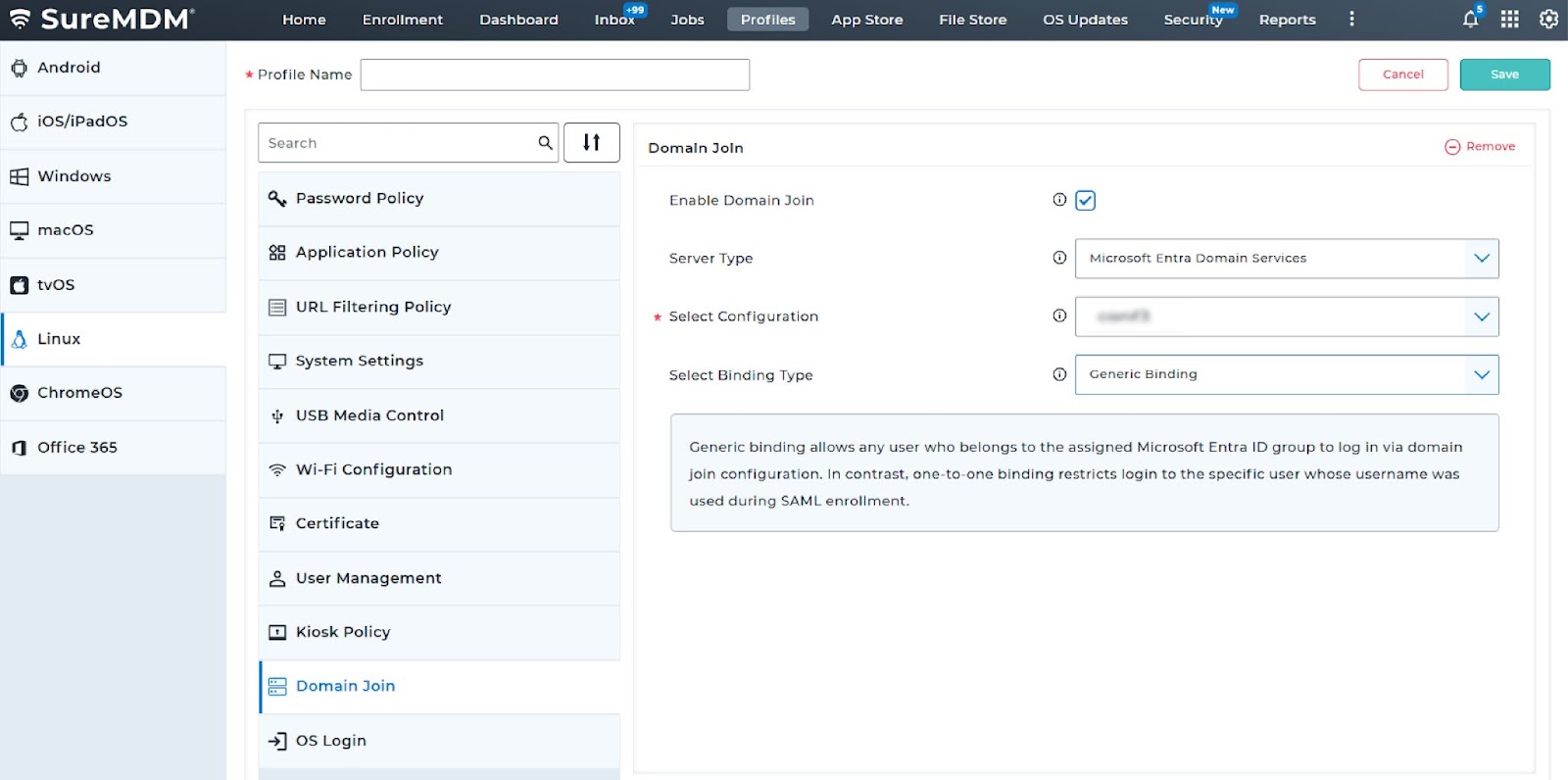
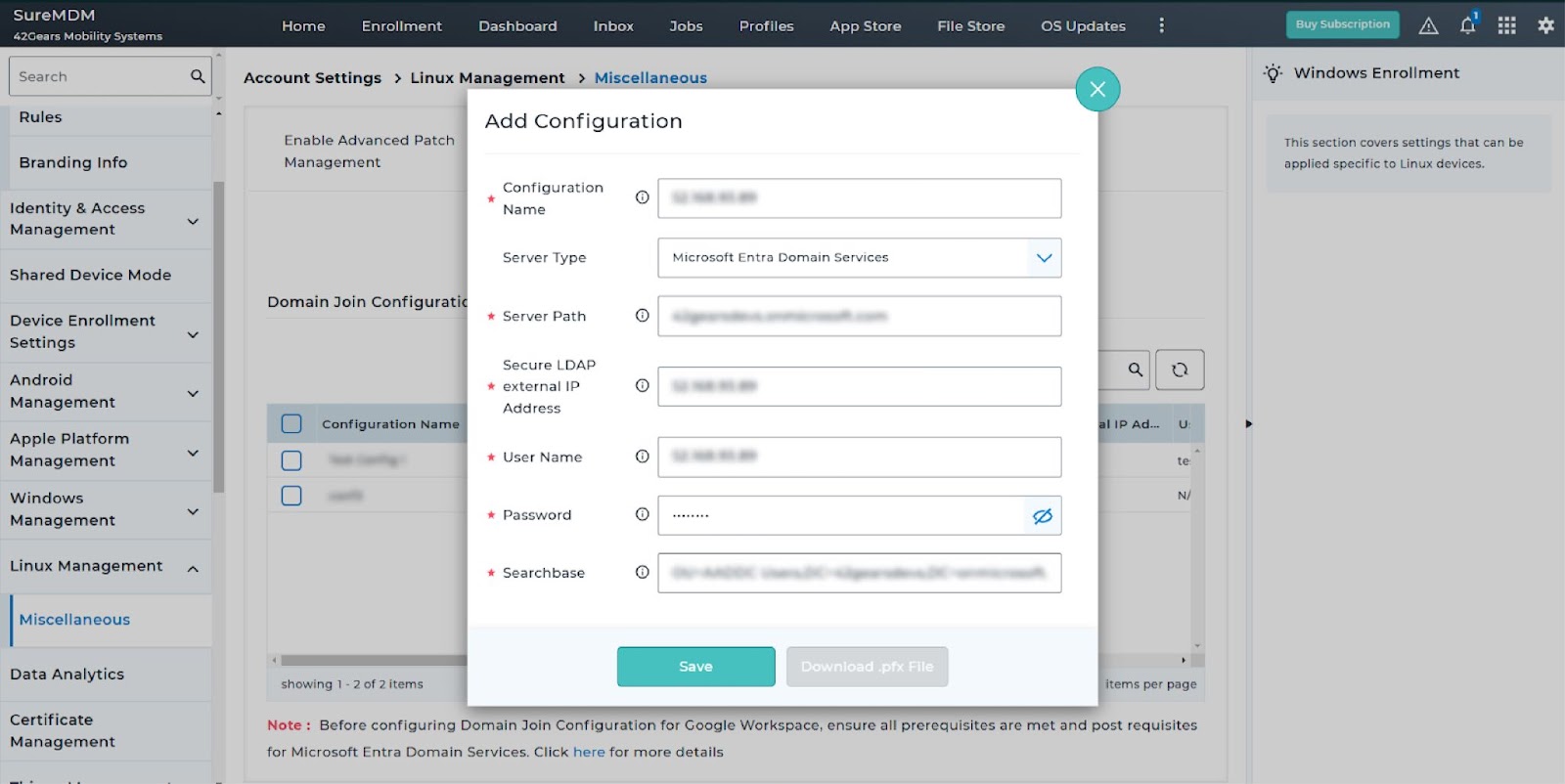
2. Google Workspace
- Generic Binding
- Devices authenticate using credentials from the Google Workspace domain, enabling all domain users with appropriate permissions to log in.
- Use Case
- Consider a research lab where multiple analysts need shared access to Linux devices. Google Workspace integration simplifies the process, users log in securely with their Workspace credentials, eliminating the hassle of managing individual accounts locally.
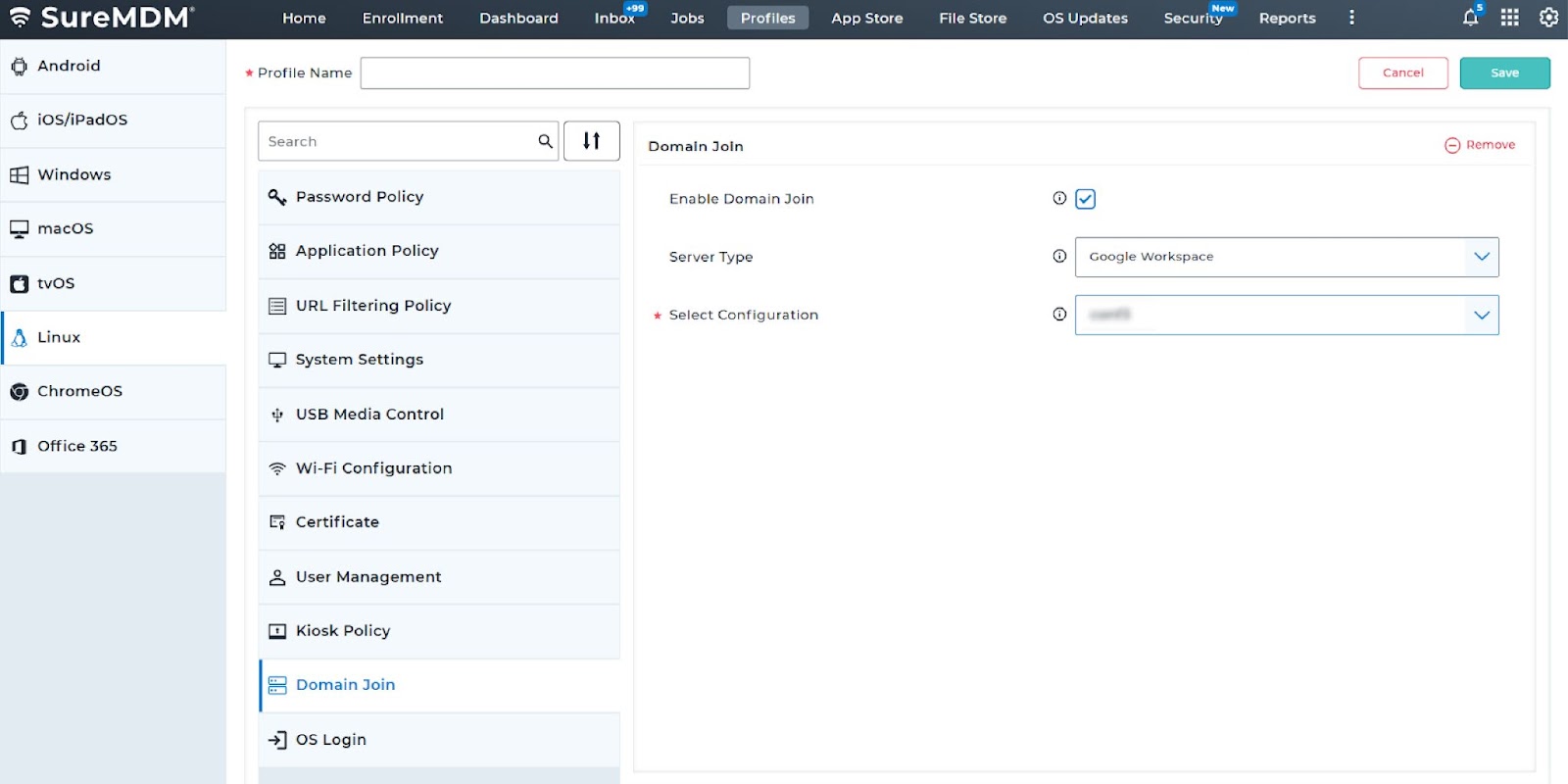
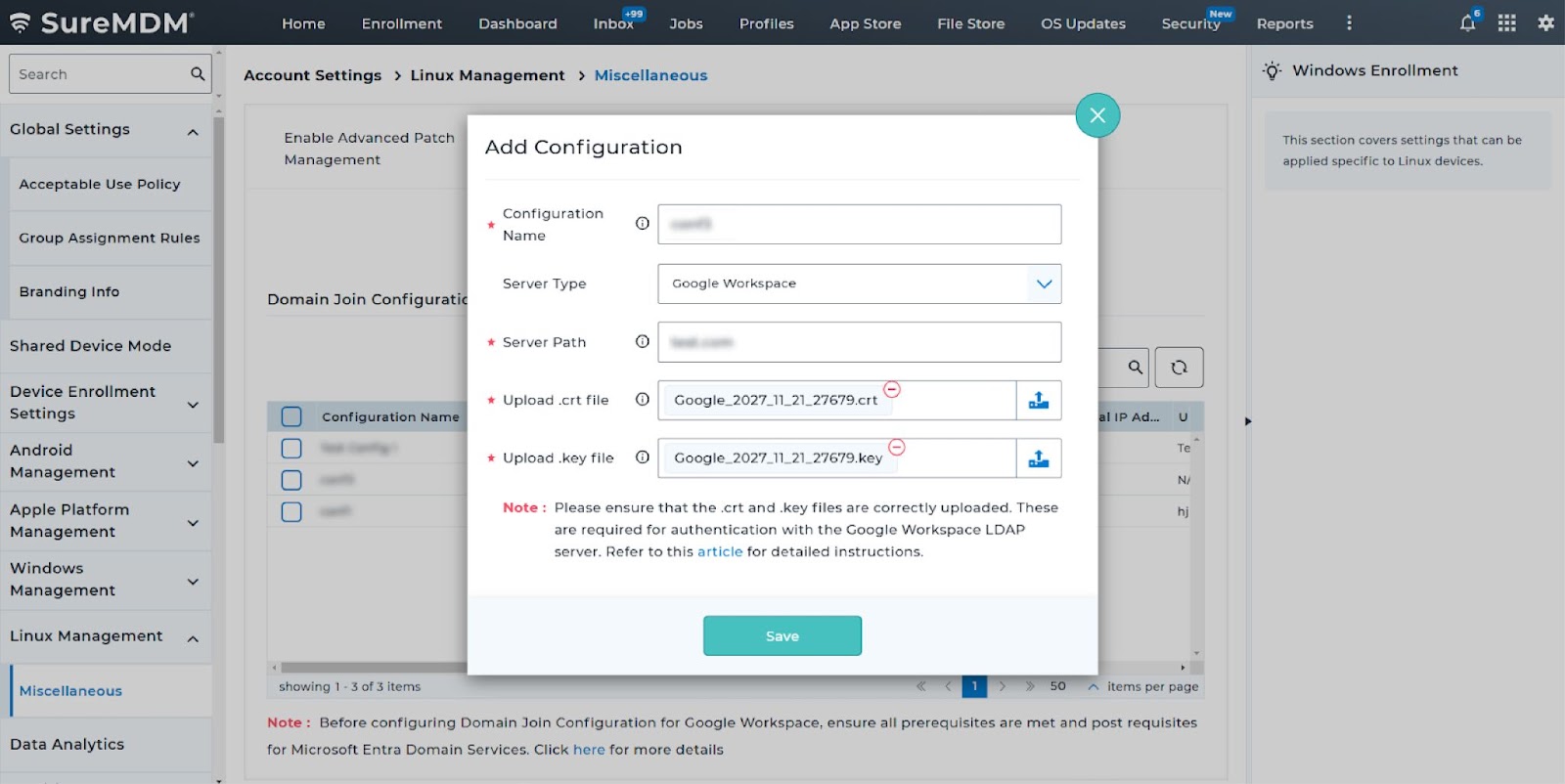
Real-Life Scenarios of SureMDM Domain Join
- Educational Institutions
- Challenge
Managing students’ and teachers' access to Linux-based computer labs can be tricky, especially when it comes to ensuring that only authorized users can log in. - Solution
With SureMDM Domain Join using Google Workspace’s Generic Binding, administrators can grant role-based access, making it easier to control who can access specific devices. This ensures that students and staff have the right permissions without compromising security, creating a smoother experience for everyone in the lab.
- Challenge
- Technology and Software Development Companies
- Challenge
For developers working on high-security projects, ensuring that only authorized users can access their dedicated Linux machines is crucial. It’s about having the right devices linked to the right accounts. - Solution
By using Domain Join with Microsoft Entra’s One-to-One Binding, companies can pair specific developers with their designated Linux devices. This approach ensures tight control and accountability, so only authorized individuals can access sensitive machines.
- Challenge
- Healthcare and Compliance-Driven Industries
- Challenge
Healthcare organizations, as well as those in compliance-heavy industries like banks and financial services, face strict regulations around data security. This includes ensuring secure access to Linux devices that handle sensitive patient records and other confidential data. - Solution
By using Domain Join with Microsoft Entra’s Generic Binding, these organizations can provide secure authentication across multiple Linux devices. This approach streamlines access management while maintaining centralized control, helping to stay compliant with regulations and safeguarding sensitive data.
- Challenge
Across various industries, implementing SureMDM Domain Join offers customized solutions to meet unique security and access management needs.
Conclusion
SureMDM Domain Join simplifies LDAP configuration, enhances security, and ensures a consistent user experience across all Linux devices. By centralizing authentication management, organizations can streamline their IT operations and reduce the risk of security breaches.
Simplify LDAP configuration and
enhance security for Linux devices
Subscribe for our free newsletter

